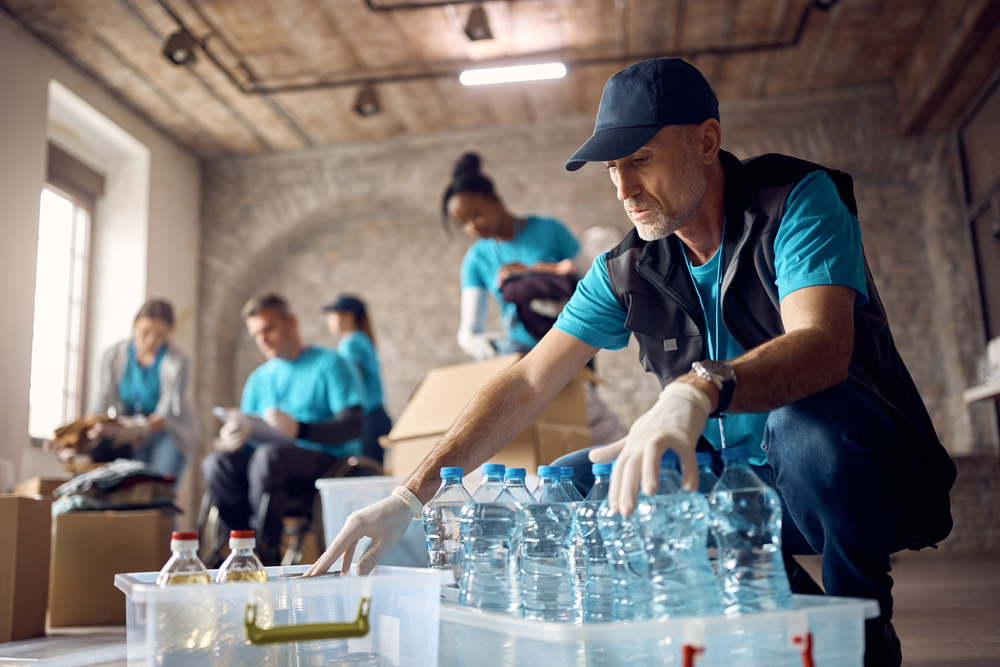When disaster strikes, lives can be turned upside down in an instant. Homes are destroyed, livelihoods lost, and communities displaced. It is at times like these that help is needed on the ground to provide relief to those affected. As a volunteer responding to disasters over the last decade, I have witnessed both the heartbreak and the hope that develops when people come together to rebuild. To that end, here is an overview of what it’s like to be on the front lines as a disaster relief volunteer.
Preparing to Deploy
When a major disaster hits, the non-profit volunteering calls go out. After registering with a non-profit like the Brother’s Brother Foundation, I am put on standby until it is established where volunteers are needed the most. This is a period of both eagerness and uncertainty as I prepare my go-bag and wait to hear where I’ll be deployed.
Mobilizing Quickly
Upon deployment, speed is obviously of the essence. I have been on flights departing just hours after getting the call, barely enough time to notify my family and employer before mobilizing. At the disaster zone, the priority is getting volunteers outfitted with ID badges, orienting to the command structure, and deploying to assigned roles. We quickly form into teams and make our way to the communities most in need.
Assessing Needs
The early stages involve a rapid needs assessment. Driving through neighborhoods, we take stock of the scale of damage and identify hazards, escape routes, and areas of greatest need. We talk to residents to learn their immediate concerns, like access to water, medicine, and shelter. I’ve had tearful people cling to me, so grateful to simply talk to someone and know that help has arrived.
Distributing Supplies
Once needs have been identified, we turn our attention to distribution operations. This means setting up supply points, sorting donations, and preparing kits of essentials. This part is extremely rewarding, being able to provide tangible help like food, water, and hygiene items to those who have lost everything. The smiles on people’s faces when they receive supplies keeps us going through the long hours on our feet.
Clearing Debris
After meeting initial requirements, the heavy work really begins – namely, debris clearance. We get out the chainsaws, axes, and other tools to clear downed trees, cut away collapsed roofs, and make areas more accessible. This can be both mentally and physically grueling as seeing the scale of destruction firsthand and stepping through the rubble of people’s lives takes an emotional toll. The solidarity of working shoulder-to-shoulder with other volunteers gives me strength though.
Rebuilding Hope
While disaster relief starts with meeting urgent needs, rebuilding hope is just as important. Just sitting with survivors and listening to their stories while assuring them they are not alone can make a huge difference. I try to form connections, learning people’s names, hearing about their loved ones, and infusing care into each interaction. These are heavy but precious moments.
Transitioning Out
Deployment length varies, but often lasts up to a couple of weeks. As the assignment wraps up, it’s time to hand off response coordination to the next wave of volunteers. This transition process ensures continuity so incoming volunteers can pick up right where we left off. Saying goodbye to communities is often bittersweet. But I take heart knowing the work goes on, under the capable hands of volunteers who will carry the torch.
Until the Next Time
Returning home and readjusting to everyday life means I can take time after bearing witness to such tragedy. But the human spirit I’ve encountered never ceases to uplift me. I know I’ll continue to answer the call whenever disaster strikes, donating my hands, heart, and voice to the healing process.





